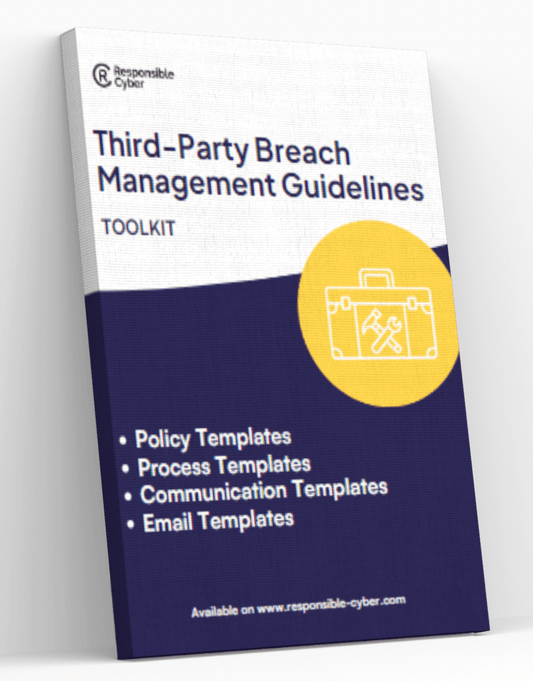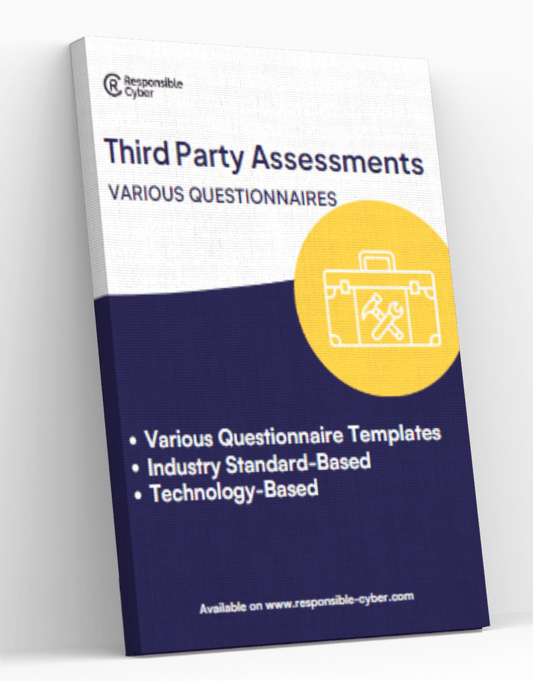Third Party Risk Management for Beginners: A Comprehensive Guide

In today's interconnected business ecosystem, organizations increasingly rely on third-party vendors for essential services, from cloud computing to customer relationship management. However, this dependence on external entities introduces a myriad of risks, making Third Party Risk Management (TPRM) an essential discipline for businesses of all sizes. This guide is designed to introduce beginners to the concepts and practices of TPRM, helping you understand its importance, the risks involved, and the steps to effectively manage these risks.
What is Third Party Risk Management?
Third Party Risk Management (TPRM) is the process by which organizations identify, assess, manage, and monitor the risks that third parties pose to their information security, finances, operations, and compliance status. Effective TPRM helps organizations prevent data breaches, ensure compliance with regulations, and maintain operational integrity.
The Importance of Third Party Risk Management
As businesses expand their use of third-party services, the potential for risk increases exponentially. These risks can range from data breaches resulting in loss of sensitive information to supply chain disruptions that can halt operations. Without a comprehensive TPRM program, organizations leave themselves vulnerable to:
- Data breaches and cyberattacks: Third parties can be weak links in data security, especially if they have access to your organization’s sensitive or confidential information.
- Compliance violations: Non-compliance with regulations such as GDPR, HIPAA, or PCI DSS can result in hefty fines and legal issues, especially when third parties are involved.
- Reputational damage: Issues arising from third-party failures can reflect poorly on your organization, affecting customer trust and business partnerships.
- Financial losses: Operational disruptions or breaches involving third parties can lead to significant financial losses.
Identifying Third Party Risks
The first step in TPRM is identifying the various types of risks associated with third-party relationships. These risks typically fall into four main categories:
- Cybersecurity Risks: The possibility that a third party could be the cause or the conduit of a cyberattack.
- Compliance Risks: The risk that the third party does not adhere to relevant laws, regulations, or policies, potentially causing legal issues for your company.
- Operational Risks: The risks that arise from the third party’s failure to deliver services or products, leading to operational disruptions.
- Reputational Risks: The damage to your company’s reputation that could occur if a third party fails to meet ethical or professional standards.
Steps to Effective Third Party Risk Management
Implementing an effective TPRM program involves several key steps:
1. Planning and Scoping
Define Objectives: Establish clear goals for what your TPRM program needs to achieve based on your business context and regulatory environment.
Scope Third-Party Inventory: Create a comprehensive list of all third parties you engage with. This inventory should include details such as services provided, access to your data, and the criticality of their services.
2. Due Diligence and Risk Assessment
Conduct Due Diligence: Thoroughly vet potential and existing third parties. Evaluate their security practices, compliance records, financial stability, and business reputation.
Assess Risks: Use the information gathered during due diligence to assess the risk each third party poses. Consider factors like the sensitivity of data accessed, the extent of services provided, and their security and compliance postures.
3. Contracting and Control Implementation
Negotiate Contracts: Ensure that contracts with third parties include clauses that require them to adhere to security and compliance standards relevant to your industry. Include the right to audit and stipulations for breach notification.
Implement Controls: Based on the risk assessment, implement appropriate controls. These might include restricting data access, requiring the use of secure networks, or mandating regular security audits.
4. Continuous Monitoring
Monitor Performance: Regularly review third-party performance to ensure compliance with contractual obligations and control requirements.
Conduct Audits: Perform periodic audits of third-party operations to validate compliance and risk management practices.
5. Incident Management and Termination Strategy
Develop Incident Response Plans: Prepare for potential third-party incidents by developing response strategies that include escalation processes, communication plans, and remedial actions.
Plan for Termination: Establish clear procedures for terminating third-party relationships, including the secure transfer or destruction of data.
Best Practices for Third Party Risk Management
- Centralize TPRM Processes: Use a centralized approach to manage all third-party risks across the organization to maintain consistency and control.
- Leverage Technology: Employ TPRM software solutions to automate and streamline the risk management process.
- Educate and Train: Regularly train employees involved in TPRM on the latest risks, regulatory changes, and best practices.
- Build Relationships: Maintain open lines of communication with third parties. Good relationships can facilitate better compliance and risk management.
Conclusion
For beginners, Third Party Risk Management may seem daunting due to its complexity and the critical stakes involved. However, by understanding the fundamentals outlined in this guide and implementing a structured, step-by-step approach to TPRM, organizations can significantly mitigate risks posed by third parties. Not only does this protect the organization from potential harm, but it also builds a foundation for sustainable growth and successful partnerships in today’s increasingly networked business environment.
Visit our website: https://riskimmune.com







